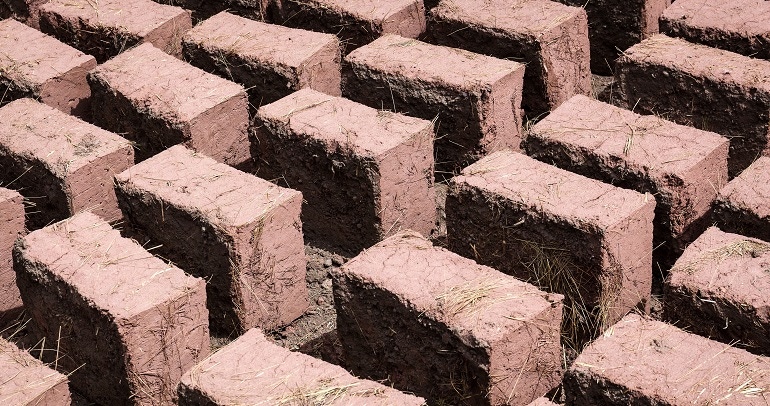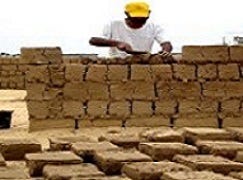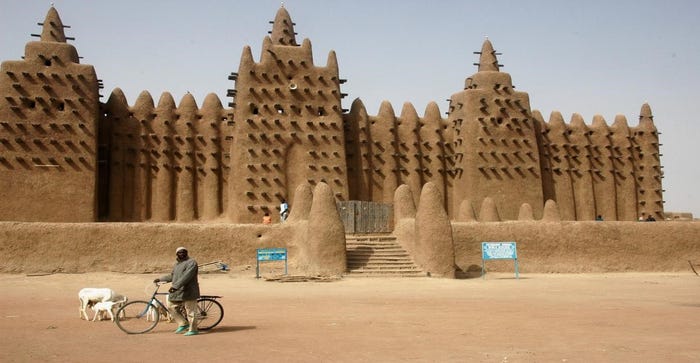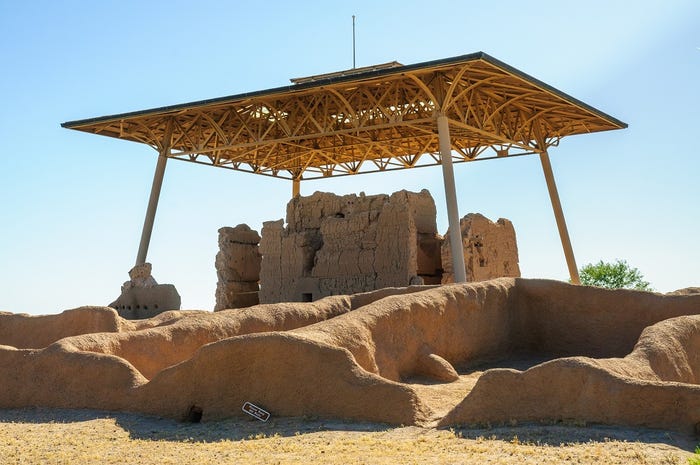How Concrete Started—Part 1: Sun Dried Brick
Part one of a six-part series where Luke M. Snell explores the origins of modern concrete from mud mortar to Roman concrete.

I set out on a quest to learn when and how concrete got its start. After reading several books and reviewing research reports and internet blogs, it became apparent that the starting point of concrete hinges on how you define concrete. Thus we must first define two terms we use today, sometimes (incorrectly) interchangeably. Merriam-Webster defines:
Concrete as “a mass formed by concretion or coalescence of separate particles of matter in one body.”
Cement as “a substance to make objects adhere to each other.”
Although these definitions are rather vague, they give us a starting point. One of the earliest methods of creating a concrete would be construction using sun dried bricks. To make the construction stable they used mud as a cement and plastered the entire wall with mud to give it a smooth finish.
Today we would call this construction style masonry, however it does meet the above definitions of concrete and cement and may be the genesis of today’s concrete.
Archeologist have found evidence of sun-dried brick structures in Jericho dating to 9000 BC. These bricks are made from clay and reinforced with straw. The technique of making these bricks was quite simple. Clay, water, and straw was mixed to form a slurry. This slurry was then cast into forms or hand-shaped into bricks and left in the sun to dry. The straw was a reinforcement that kept the bricks from cracking while they were drying.
During the drying time, the bricks needed to be turned to achieve uniform drying. Typically, the drying process takes 2 to 3 weeks. The mortar used to hold the bricks
together was also clay mud as shown below.

Sun dried bricks have played key roles in the history of several religions. The biblical story of Exodus starts with the Jews in Egypt being forced to make sun-dried bricks. As punishment for asking for time off to celebrate a religious holiday, the Pharaoh demanded they also gather the straw needed to make the bricks. Previously other people had gathered the straw and provided it to the brick makers. Now the Jews had to also gather the straw plus maintain the same production quota. This extra work set the stage for intense negotiations between Moses and Pharaoh ultimately resulting in the exodus from Egypt. For more detail, see Exodus, Chapter 5.
As Islam developed in northern Africa, mosques were built. These were in the desert and needed to use local building materials—mostly sun-dried bricks.The great Mosque at Djenné, built in Mali in 1120 was rebuilt in 1907. This mosque hold over 3,000 worshipers and is believed to be the largest building ever constructed with sun-dried brick and mud mortar. Since Mali has a rainy season, the mosque requires routine maintenance to replace any clay that washes away. Thousands of Djenne residents participate each year in the plastering ceremony of the Grand Mosque, which will now be powered by solar electricity.

In North America, Casa Grande was built in the Arizona desert around 1300. It was an elaborate settlement with a main building, irrigation canals, housing, and a sports field. Although it was not built with sun dried bricks, it was built using mud (called caliche or hard pan). The caliche was mixed with water and placed by baskets. The sun-dried caliche mixture resulted in a type of concrete structure. This method of mixing the caliche, placing it into the structure, and letting it harden is much like modern day concrete construction.

No one is sure of the purpose of this structure. It appears to have been built to celebrate the summer and winter solstices so was likely part of religious ceremonies. Casa Grande was abandoned around 1450 so little is known about the builders or it purpose. It is now a national monument with a roof installed overhead to protect it from the weather.
But the main use of sun-dried bricks, historically and still today, is for housing. Homes made with sun dried brick help moderate the interior temperature. During the day the heat slowly increases. During the cool nights, the heat will slowly be released thus providing a relatively comfortable living space in hot, dry areas.

Sun-dried bricks worked well in very dry areas however they were problematic in areas that received much rain. Our ancestors saw the need to improve the sun-dried brick and the mortar that holds them together. The next steps required toughening the bricks so they were more durable and stronger plus developing better bonding materials to hold the bricks together in any type of weather. We’ll cover the beginning of that in Part Two.
Luke M. Snell is a concrete historian and Emeritus Professor at Southern Illinois University Edwardsville.
About the Author(s)
You May Also Like




